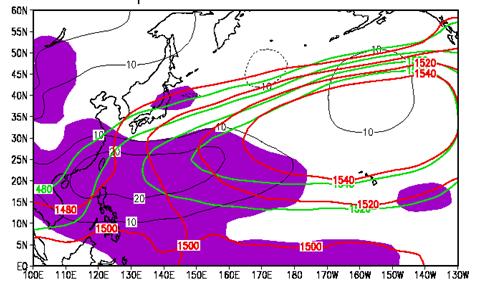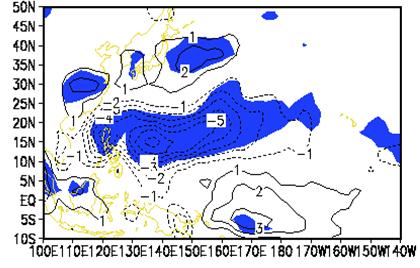This study (Lu, 2001, J. Meteor. Soc. Japan, 79, 771-783) investigated the interannual variability of the summer western North Pacific subtropical high (WNPSH). It illustrated clearly that the year-to-year zonal displacement of the WNPSH is closely related to the intensity of atmospheric convection over the Philippine Sea: Enhanced (suppressed) convection induces an eastward retreated (westward extended) WNPSH. A vorticity analysis performed by the author indicated that the stretching and advection of relative vorticity are both responsible for the northward shift of the vorticity anomaly relative to the divergence anomaly induced by tropical heating.
The results shown by this study provide a helpful base for further studies on the impacts of tropical heating anomalies on East Asian climate, since the WNPSH plays a crucial role in transporting warm and humid air into East Asia. They are also helpful for understanding the possible impacts of tropical SST anomalies on East Asian climate, since later studies found that the atmospheric convection over the Philippine Sea is significantly affected by the SST anomalies in tropical Indian Ocean and Pacific.
Additionally, this study indicated that the WNPSH exhibits a remarkable seasonal evolution around mid July, and such a seasonal evolution shows an interesting year-to-year variation. These features of the WNPSH might have a role in modulating seasonal variation of East Asian summer climate, and deserve further studies.
Composite WNPSH & differences
(—Positive index;—Negative index; — Diff.)


Precipitation associated with westward extended WNPSH
